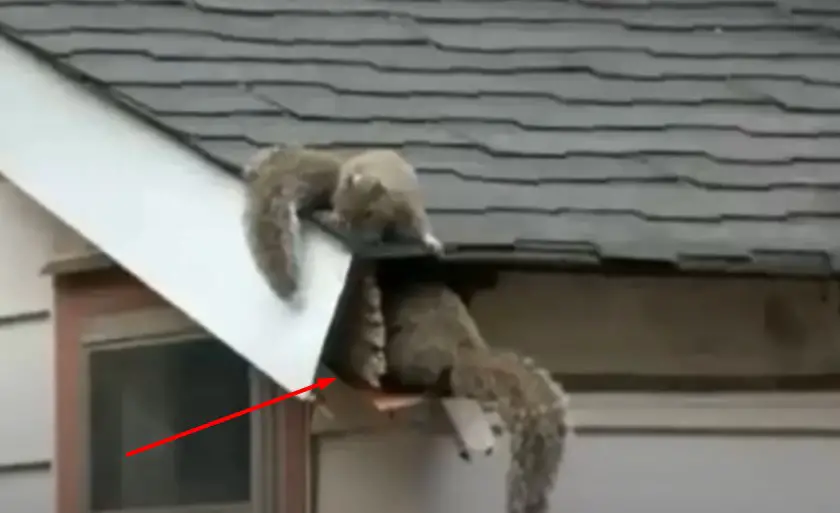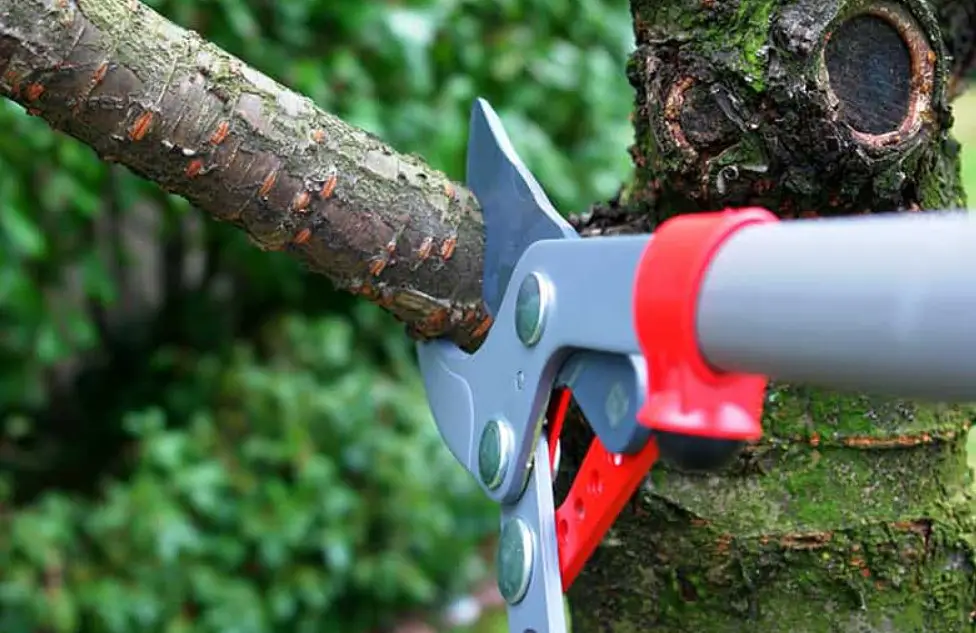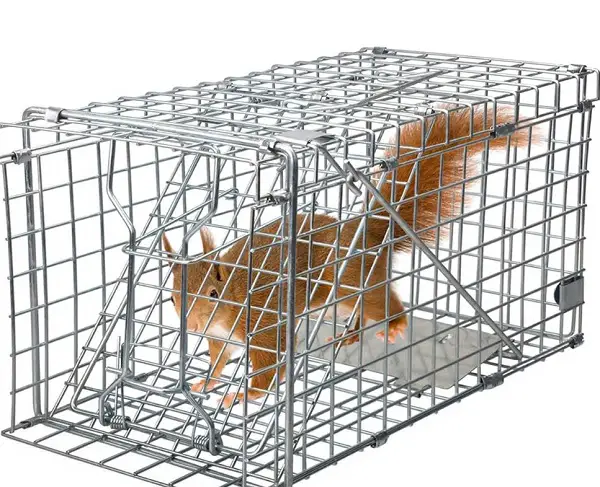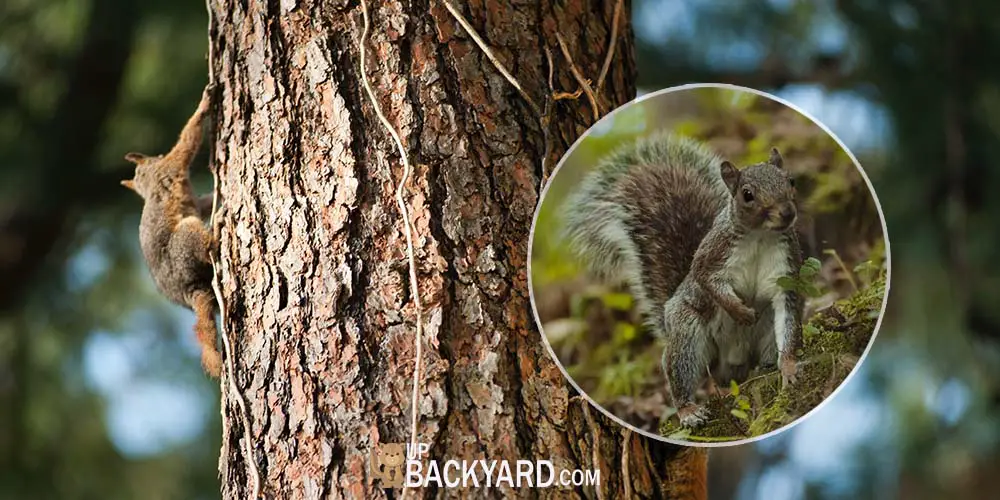Squirrels are some of the more common rodents that we encounter and do not totally freak out over in our daily lives.
They are adorable, chunky, and fun to watch as they zig-zag around your yard. Sometimes, they can even seem like daredevils hopping from tree branch to tree branch many stories above the ground.
While it may seem like you are always seeing the same squirrels in your yard, it is hard to tell if it is truly the same squirrel because they really do not have distinguishing features.
You know that squirrels have a nest, so perhaps that is the same squirrel day in and day out foraging for food to bring back home. But how far do squirrels travel?
How Far Do Squirrels Travel?
Squirrels tend to travel between 2-5 miles a day and are able to safely return to their home nests without a problem.
Experts and trappers believe that squirrels can still find their way back even from 10 miles away, but they are much less likely to make it home from that distance.
Do Squirrels Have a Territory?
Many animals in the wild live in and will defend territories.
An animal’s territory is a part of the land that the animal has laid claim to and to make other animals of both the same and different species respect it, they will fight the other animals if they try to enter.
When you witness the adorable squirrels frolicking in your backyard, it is hard to picture them as aggressive, territorial animals. In this case, looks are deceiving as certain types of squirrels can be territorial.
Many squirrels are solitary or live in small families that they share their nests with. Sometimes, male squirrels will attack the nests of other male squirrel’s offspring and kill them. This practice is especially common if food or other resources are scarce.
Wild animals are known to mark their territories with the scent of urine. Other animals recognize the scent and understand that the area is already claimed.
Squirrels will use urine to make their points. They will also chatter (vocalization), wag their tails aggressively, and attack visitors if they come too close.
Male squirrels tend to be territorial at all times because they are worried about finding mates.
Female squirrels tend to be more territorial when they have a nest full of young to defend. A mother squirrel will defend her nest to the death.
Is It Ok To Relocate Squirrels?
There are numerous reasons why you would want to relocate squirrels away from your home.
Sometimes, squirrels are able to get inside your home and nest. This usually happens in attack spaces that are all too easy for squirrels to find entry to.
Squirrels can cause a lot of damage to both the inside and outside of your home. From chewing through wires, nibbling on wood and siding, scratching off roofing shingles, eating all the seed from your bird feeder, and spreading diseases, squirrels are a lot of trouble in a cute compact package.
When you have to decide what to do with squirrels, the answer may seem obvious: remove them from your home.
But how? Is it even legal to trap and remove squirrels?
In many places, it is illegal to trap and remove squirrels from your home and relocate them to another place.
Sadly, sometimes the only option is to trap the squirrel and euthanize it in a humane way. If you do not want to do that yourself, calling a local wildlife specialist will help.
A local wildlife specialist may have resources that you do not. Some even have rights and access to public lands and forest preserves that allow them to relocate the squirrels there.
If you are hoping to try your options for a new home for the squirrels, a wildlife specialist is the way to go. If you are just hoping to resolve your problem, calling an exterminator will work.
An exterminator is not going to try to relocate squirrels to wildlife preserves, instead, they will trap and humanely euthanize the squirrels. While this option is not a happy one, it may be your only option.
How Do I Get Rid of Squirrels?
Before squirrels become a problem, it is best to make sure they never will be. Taking the time to squirrel proof your home decreases the likelihood that you will ever have to worry about squirrel removal.

Sealing all the possible entry points prevents squirrels from entering your home. But be aware, squirrels can make it through even the smallest holes.
Even if they are not at ground level, any hole that allows a squirrel a potential entry point needs to be taken care of immediately.
Trimming away branches from trees that are close to your home or touch the roof of your house helps prevent squirrels from gaining access into your attic through small holes you may not be able to see or repair.

However, if squirrels are already in your home, it is too late to simply prevent their entry. The first step to a squirrel removal plan is to assess the situation.
Have you seen any squirrels? How many? Is there a nest? Are there babies in the nest?
These are all questions to ask yourself before you begin your plan of action. Once a nest and babies are involved, removal becomes much more complicated.
As mentioned above, mother squirrels are very territorial and aggressive. If you have a nest with babies, it may be a good idea to wait until the babies are older. Once the babies grow up and leave the nest, removing them is the same as removing any other squirrel.
Once you know how many squirrels you have in your home, you can plan your attack.
A simple way to remove squirrels from your home is to listen to their patterns. They will have to leave at some point during the day to search for food.
When you notice that you have a squirrel problem, begin sealing off all entry holes except for one.
Leave this one open for the squirrels to come and go. Once you know they have left for food, seal the remaining hole to prevent reentry.
With this strategy, you do not have to worry about trapping squirrels or relocating them. You also do not have to euthanize them since they are removed from your home without much effort or force.
The downside to this plan is that it can take a while to figure out the squirrels schedules.
You may also miss other entry points and have to search for how they are still getting in.
Another thing to consider is that you will not be sure that all the squirrels have left your home before sealing the hole. If squirrels are trapped inside, they will die and can smell rather foul as they decompose.
You might also like: Can Squirrels Eat Bread? [+ What Can’t You Feed a Squirrel?]
Can I Use Poison to Kill Squirrels in my House?
Sure, you can use poison to deal with the squirrel problem in your house. However, this is not the best idea.
Squirrels will eat the poison and most likely return to their nests, which are in your home. When they die, you will have a decaying squirrel corpse in your attic space.
Using rodent poison is also dangerous. If you have pets or children, they can get into the poison and risk severe injury. Squirrels are also food for other predators like coyotes, cats, and dogs.
If the squirrel eats the poison and instead of returning to its nest to die, it can go outside. If an animal eats the squirrel with a belly full of poison, that animal will get poisoned as well.
It is simply better to avoid using poison when dealing with squirrels.
Instead of poison, try rodent or squirrel repellent. The strong smell is unappealing to squirrels and will force them out of your home, allowing you to fill up the entry points. While this may not be the most effective way to remove squirrels, it beats poison.
Other Ways to Remove Squirrels
If you are looking for a more efficient way to deal with squirrels in your home, choosing a trap is a great option.
There are three main types of traps that you can use: single animal live cage traps, repeater traps, and one-way squirrel exclusion doors.

Single animal live cage traps are metal traps that lure animals into them with food or bait. Once the animal is inside, a door swings shut, enclosing the animal inside. These are common traps and can be very effective.
The downside is that squirrels tend to be very smart and may see the cage. When they see the cage, they are not likely to go into it to retrieve food.
If the single animal live cage trap is not doing it for you, placing a repeater trap at the entry point of your home may provide the relief you are hoping for.
These traps can hold more than one squirrel, making it ideal for those with multiple rodents to deal with. One by one, the squirrels will leave looking for food and wind up trapped in the repeater trap.
Repeater traps are an awesome idea for those dealing with multiple squirrels. But what if you do not want to capture the squirrels?
In most places, it is illegal to relocate squirrels. This means that if you catch squirrels, you have to let them go on your land or humanely dispose of them.
If euthanizing squirrels is not your thing and you do not mind the squirrels hanging out in your backyard, a one-way squirrel exclusion door is the perfect solution.
This door looks similar to a trap and will be placed at the entry point of the home. As the squirrels leave in search for food, they will pass through the door, allowing them to go into the yard, but not return to the home.
Final Thoughts
Squirrels are unique and fascinating creatures that we live side by side with.
Most of us have tens of squirrels living in your backyards right now! However, when squirrels make their way into our homes, it becomes an issue.
The best thing is to prevent squirrels from ever entering your home in the first place. Seal off any possible access points early and keep an eye out for any new holes that squirrels are trying to dig or bite into your home.
If the squirrels have made it inside, you can try sealing off all entry points except one. Then, when the squirrel leaves to gather food, seal the remaining access point to prevent reentry.
It is not advised to use poison to deal with squirrels in your home. In addition to possibly poisoning or harming children or other animals, you risk having a dead squirrel in your attic space. Decaying squirrels can smell rancid and spread disease.
Using traps like a single animal live cage trap or a repeater trap will allow you to safely capture squirrels alive as they exit the home. However, it is illegal in most places to relocate squirrels.
If you could relocate the squirrel, the general understanding is that squirrels can still find their way back up to 10 miles from home. Since you most likely cannot relocate the squirrels, you either have to let them go on your own property or humanely euthanize them.
Another option is a one-way squirrel door that will allow the squirrels to exit the house but not return to it. Instead of being trapped in a cage, the squirrels are free to roam the yard.
Squirrels can be a menace as well as territorial, but at the end of the day, they are just looking for shelter and food. Simply maintaining your home can prevent squirrels from finding refuge within it.
